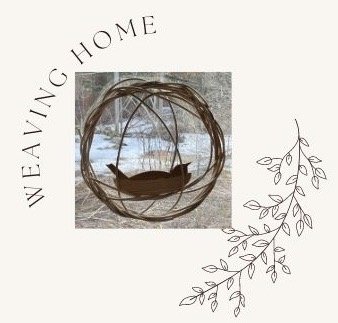Every spring I go into my garden to clear the weeds before I plant vegetables. As many of you know, I have a hard time pulling weeds. There are weeds that I just love – violets for example – and how about the forget-me-nots? The blues and whites of the forget-me-not flowers are all along the border of the my garden, I planted them from a packet of seeds I was given at a funeral. When they decide to jump into the planting area, that makes it even harder to pull them up. I have noticed that the roots of the varieties of ‘weeds’ are very different – some are shallow, some are like vines under the earth, some just cling to another root. I am not a keen observer of nature, but there were people on this land for thousands of years who knew how to grow crops and care for the land.
A few weeks ago, Presbyterians for Earth Care sent out a reading list. It is not a light summer reading list that would make fun beach reading, but it’s an important list. I bought one of the books: All We Can Save: Truth, Courage, and Solutions for the Climate Crisis edited by Ayana Elizabeth Johnson & Katharine K. Wilkinson. There are many essays and some poetry with a variety of writers, several indigenous. One of my favorites is Sherri Mitchell, author of the book Sacred Instructions where she talks about her 10-10-80 percent rule discussed in the last blog. You may be asking why it is important for indigenous people to have a role in saving our environment. It’s because modern science now realizes that what used to be thought of as primitive or superstitious knowledge is in fact deep relational wisdom. “Indigenous knowledge is based on millennia-long study of the complex relationships that exist among all systems within creation.” (Johnson & Wilkinson pg. 17)
In an act of dismissing or, at best not seeing this relationship, the current administration has rescinded previous executive orders directing federal agencies to “promote compacting, contracting, co-management, co-stewardship, and other agreements with Tribal Nations that allow them to partner with the Federal Government to administer Federal programs and services.” You can read about it here: Link
Many indigenous groups have profoundly close connection with the land they inhabit. They have wisdom in observing the plants, trees and wildlife that we often miss in our hurried way of living. Farmer’s Footprint, an organization that provides education and resources for renewable, sustainable land use, is sponsoring a webinar about the Brazilian rainforest. Founder, Zach Bush says, “Right now, the Amazon is unraveling. Over 10,000 acres disappear every day and with each loss, we risk the collapse of ecosystems that sustain our planet, our food systems, and our future.
“The Kuntanawa people—original stewards of Brazil’s Acre region—are standing in defense of their sacred homeland. Through generations of restoration and resistance, they continue to protect the forest and the ancestral knowledge rooted in it.” You can sign up to watch the webinar here. If you missed the webinar you can watch the recording here.
There are so many opportunities to learn about being in relationship with the earth, and with each other. Even when the world feels like it’s falling apart, perhaps there is something we can gain from listening to the wisdom of those who live close to the land. Perhaps it will invite us to consider what we can do. Or to ask is that mine to do?

